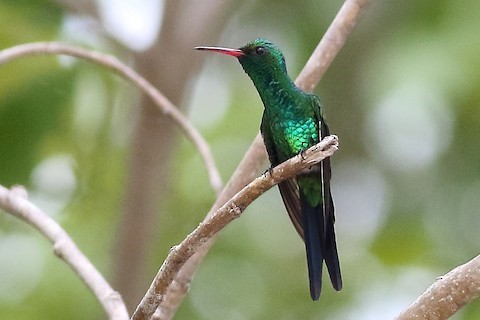Birdfinding.info ⇒ Common and easy to find throughout Cozumel. It can usually be found in and around San Miguel, along the road north of the airport, south around the villages of San José and El Cedral, and on the grounds of most of the island’s resort hotels.
Cozumel Emerald
Chlorostilbon forficatus
Endemic to Cozumel, where it occurs in woodland, scrub, and gardens.
Identification
Male is an elegant, thin, glittering green hummingbird with a very long, deeply forked tail and a straight or slightly decurved, black-tipped red bill.
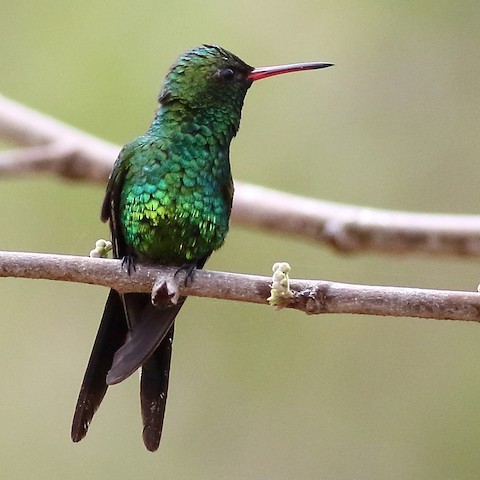
Cozumel Emerald, male. (El Cedral, Cozumel, Mexico; May 6, 2019.) © Mark L. Hoffman
Its tail is significantly longer and more deeply forked than that of the adjacent mainland species, Canivet’s Emerald.
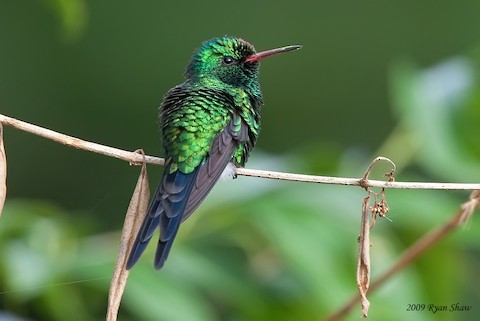
Cozumel Emerald, male. (Cozumel, Mexico; January 1, 2010.) © Ryan Shaw
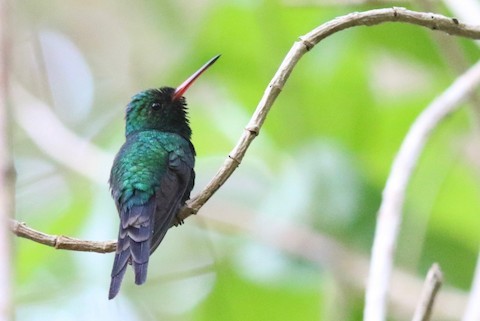
Cozumel Emerald, male. (Kùutsmil, Cozumel, Mexico; May 16, 2019.) © Eric Antonio Martínez
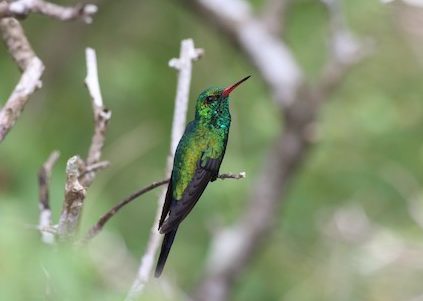
Cozumel Emerald, male. (Cozumel, Mexico; April 14, 2019.) © Jamie Adams
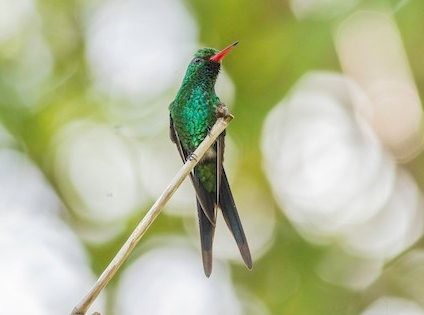
Cozumel Emerald, male. (San Miguel, Cozumel, Mexico; June 1, 2019.) © Roni Martínez
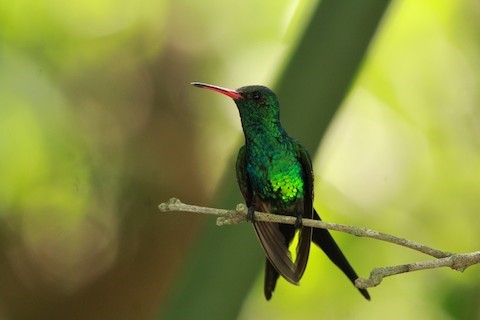
Cozumel Emerald, male. (Cozumel, Mexico; July 24, 2018.) © Zebedee Muller

Cozumel Emerald, male. (San Miguel, Cozumel, Mexico; October 29, 2017.) © Thomas Doebel

Cozumel Emerald, male. (El Cedral, Cozumel, Mexico; March 19, 2017.) © Chad Ellis

Cozumel Emerald, male. (Cozumel, Mexico; October 18, 2018.) © Noel Rivas Camo
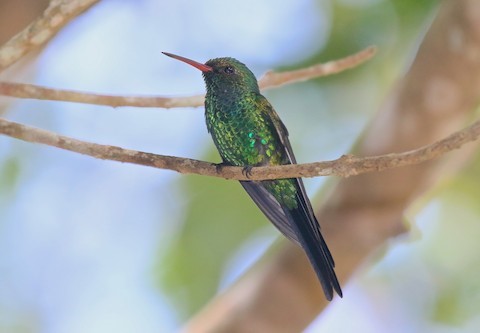
Cozumel Emerald, male. (Paradise Beach, Cozumel, Mexico; October 30, 2015.) © Arman Moreno
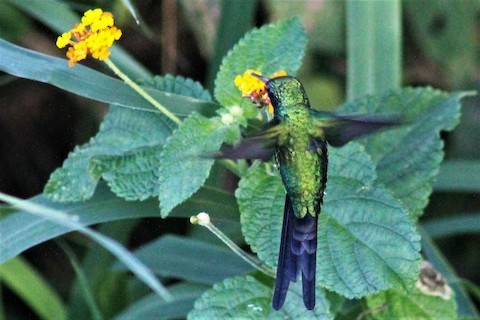
Cozumel Emerald, male, dorsal view. (Cozumel, Mexico; November 14, 2016.) © Greg Laverty
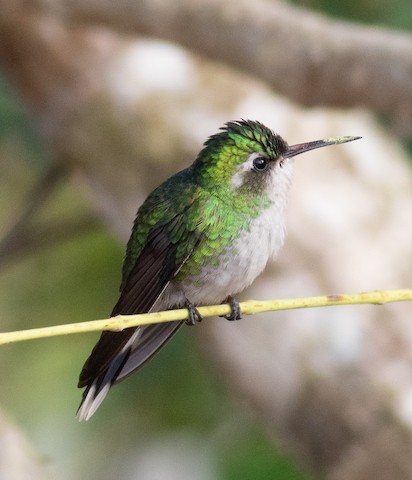
Cozumel Emerald, female. (El Cedral, Cozumel, Mexico; December 17, 2018.) © Daniel Fitzgerald
Female has a forked tail, green upperparts, whitish underparts with green sides, a blackish eyestripe, and white post-ocular streak. The outer tail feathers are distinctively patterned: white at the base and tips, with a black band in the middle.
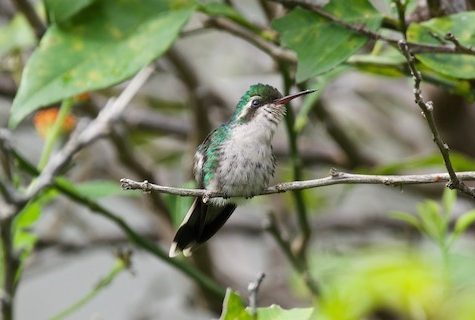
Cozumel Emerald, female—note white edge on base of outer tail feather. (Cozumel, Mexico; December 26, 2018.) © Ian Jarvie
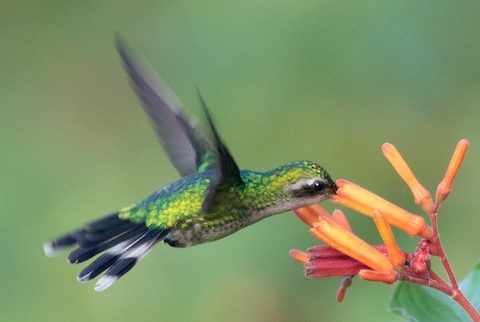
Cozumel Emerald, female showing distinctive black-and-white pattern on outer tail feathers. (El Cedral, Cozumel, Mexico; December 17, 2018.) © Daniel Fitzgerald
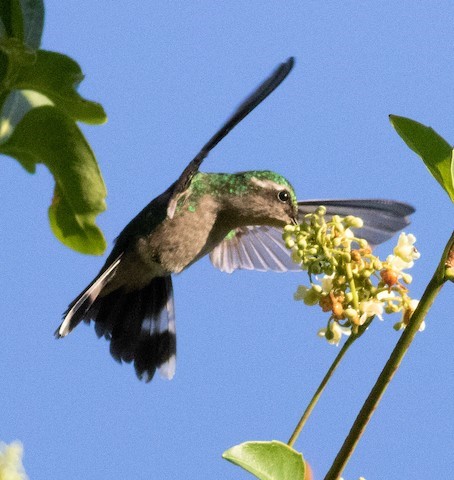
Cozumel Emerald, female showing distinctive black-and-white pattern on outer tail feathers. (Cozumel, Mexico; December 19, 2018.) © Daniel Fitzgerald

Cozumel Emerald, female showing strong facial pattern. (Cozumel, Mexico; July 3, 2018.) © Patrick V.
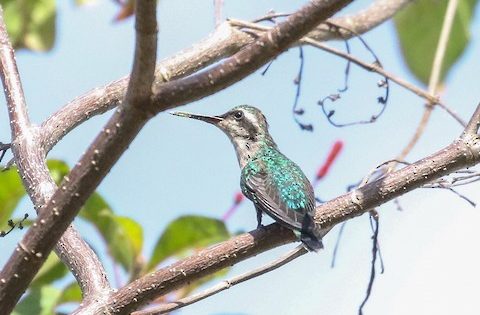
Cozumel Emerald, female showing strong facial pattern. (Cozumel, Mexico; April 1, 2018.) © Daniele Mitchell
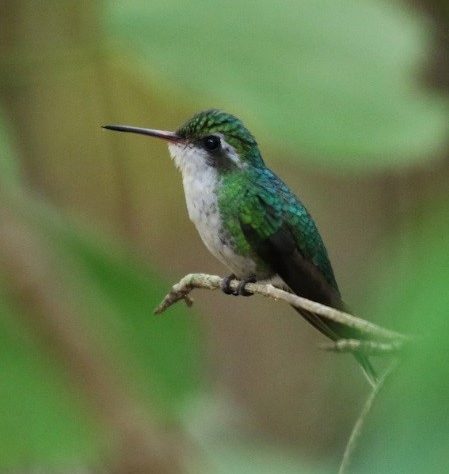
Cozumel Emerald, female. (San Miguel, Cozumel, Mexico; February 27, 2018.) © Tom Benson
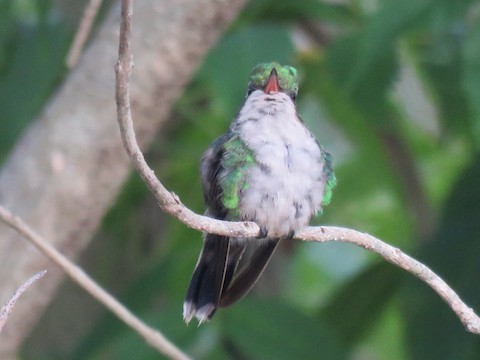
Cozumel Emerald, female showing red underside of its bill. (El Cedral, Cozumel, Mexico; July 13, 2019.) © Thomas Brooks

Cozumel Emerald, female showing fork in tail. (Cozumel, Mexico; March 6, 2013.) © Celine Lehaye
Notes
Monotypic species. Formerly considered conspecific with Canivet’s, Salvin’s, and Golden-crowned Emeralds, collectively the Fork-tailed Emerald (C. canivetii).
References
Arizmendi, M.d.C., C.I. Rodríguez-Flores, C.A. Soberanes-González, and T. S. Schulenberg. 2013. Cozumel Emerald (Chlorostilbon forficatus), version 1.0. In Neotropical Birds Online (T.S. Schulenberg, ed.). Cornell Lab of Ornithology, Ithaca, N.Y. https://doi.org/10.2173/nb.cozeme1.01.
eBird. 2019. eBird: An online database of bird distribution and abundance. Cornell Lab of Ornithology, Ithaca, N.Y. http://www.ebird.org. (Accessed August 13, 2019.)
Fogden, M., M. Taylor, and S.L. Williamson. 2014. Hummingbirds: A Life-size Guide to Every Species. HarperCollins, New York.
Howell, S.N.G., and S. Webb. 1995. A Guide to the Birds of Mexico and Northern Central America. Oxford University Press, Oxford.
